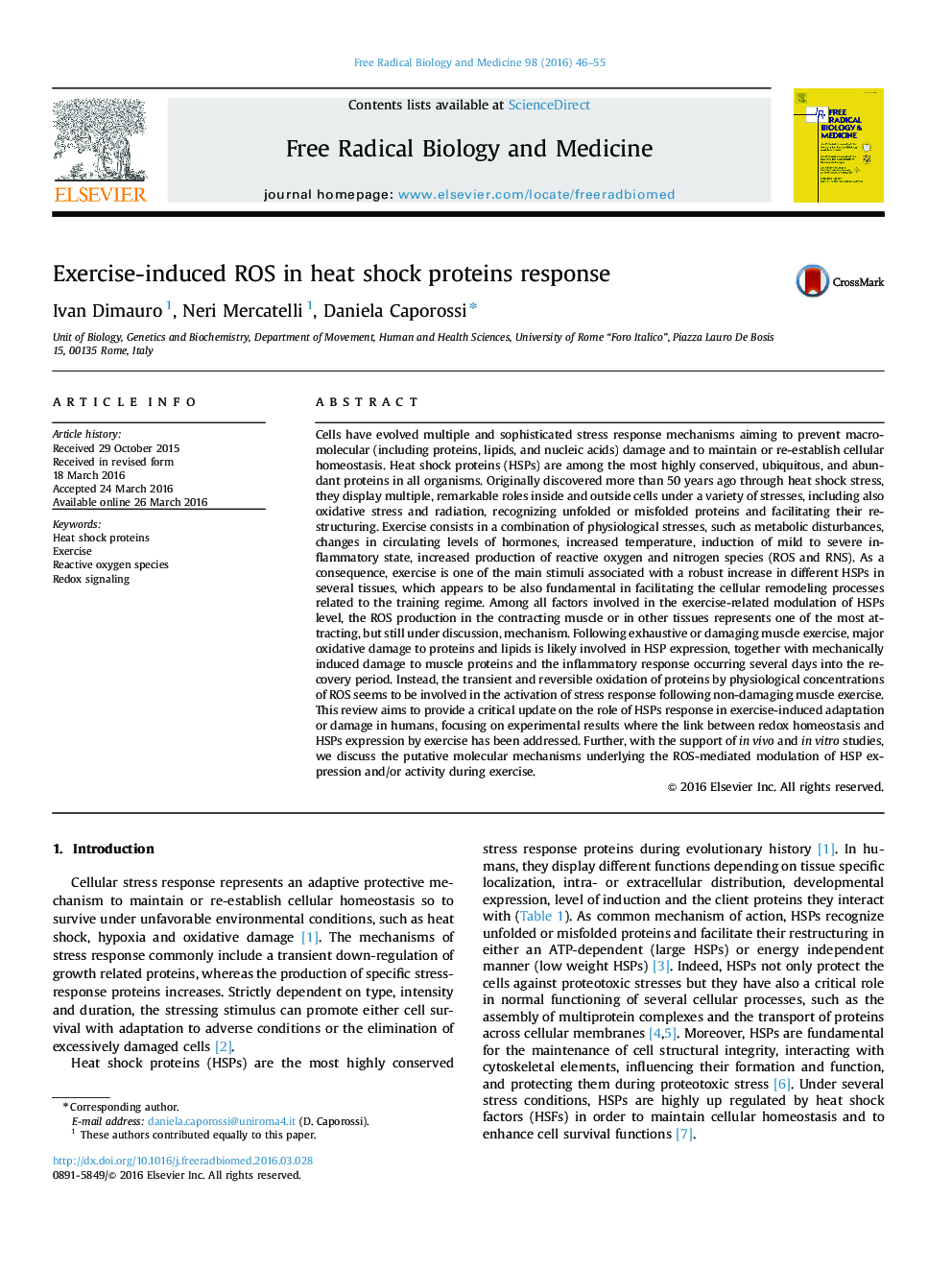| کد مقاله | کد نشریه | سال انتشار | مقاله انگلیسی | نسخه تمام متن |
|---|---|---|---|---|
| 1907653 | 1534945 | 2016 | 10 صفحه PDF | دانلود رایگان |
• Exercise provokes physiological stresses associated with HSPs response.
• Literature data support ROS contribution in exercise-induced HSPs response.
• Depending on exercise type, several redox-sensitive pathways regulate HSPs expression.
Cells have evolved multiple and sophisticated stress response mechanisms aiming to prevent macromolecular (including proteins, lipids, and nucleic acids) damage and to maintain or re-establish cellular homeostasis. Heat shock proteins (HSPs) are among the most highly conserved, ubiquitous, and abundant proteins in all organisms. Originally discovered more than 50 years ago through heat shock stress, they display multiple, remarkable roles inside and outside cells under a variety of stresses, including also oxidative stress and radiation, recognizing unfolded or misfolded proteins and facilitating their restructuring. Exercise consists in a combination of physiological stresses, such as metabolic disturbances, changes in circulating levels of hormones, increased temperature, induction of mild to severe inflammatory state, increased production of reactive oxygen and nitrogen species (ROS and RNS). As a consequence, exercise is one of the main stimuli associated with a robust increase in different HSPs in several tissues, which appears to be also fundamental in facilitating the cellular remodeling processes related to the training regime. Among all factors involved in the exercise-related modulation of HSPs level, the ROS production in the contracting muscle or in other tissues represents one of the most attracting, but still under discussion, mechanism. Following exhaustive or damaging muscle exercise, major oxidative damage to proteins and lipids is likely involved in HSP expression, together with mechanically induced damage to muscle proteins and the inflammatory response occurring several days into the recovery period. Instead, the transient and reversible oxidation of proteins by physiological concentrations of ROS seems to be involved in the activation of stress response following non-damaging muscle exercise. This review aims to provide a critical update on the role of HSPs response in exercise-induced adaptation or damage in humans, focusing on experimental results where the link between redox homeostasis and HSPs expression by exercise has been addressed. Further, with the support of in vivo and in vitro studies, we discuss the putative molecular mechanisms underlying the ROS-mediated modulation of HSP expression and/or activity during exercise.
Journal: Free Radical Biology and Medicine - Volume 98, September 2016, Pages 46–55
